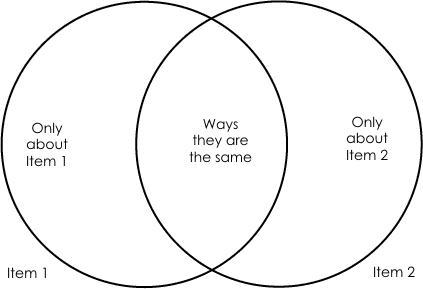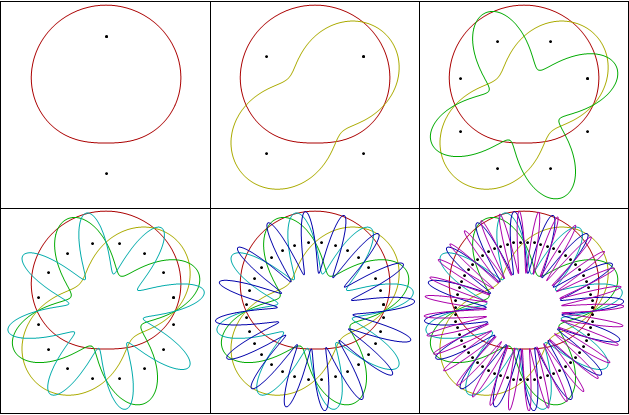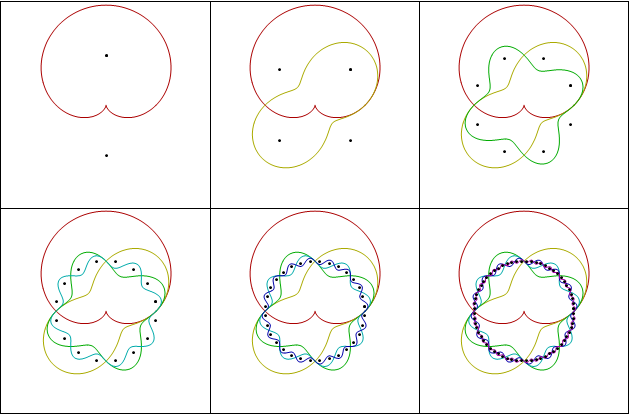In “Machine Learning Techniques—Reductions Between Prediction Quality Metrics” Beygelzimer, Langford, and Zadrozny (2009?) summarize a bunch of “techniques, called reductions, for converting a problem of minimizing one loss function into a problem of minimizing another, simpler loss function.” They give a simplified overview of machine learning algorithms and sampling methods relating them to error correcting codes and regret minimization.
Mathematician and Father. Into games, astronomy, psychology and philosophy.
The New York Time’s article “Skilled Work, Without the Worker” describe how robots in places like the Netherlands and California are starting to displace Chinese factories filled with low skilled workers. They write
The falling costs and growing sophistication of robots have touched off a renewed debate among economists and technologists over how quickly jobs will be lost. This year, Erik Brynjolfsson and Andrew McAfee, economists at the Massachusetts Institute of Technology, made the case for a rapid transformation. “The pace and scale of this encroachment into human skills is relatively recent and has profound economic implications,” they wrote in their book, “Race Against the Machine.”
In a review of “Race Against the Machine”, Bill Jarvis writes
In “Race Against the Machine”, economists Erik Brynjolfsson and Andrew McAfee ask the question: Could technology be destroying jobs? They then expand on that to explore whether advancing information technology might be an important contributor to the current unemployment disaster. The authors argue very convincingly that the answer to both questions is YES.
which reminds me of Robin Hanson’s paper “Economic Growth Given Machine Intelligence”.
I’ve been looking at versions of Adaboost that are less sensitive to noise such as Softboost. Softboost works by ignoring a number of outliers set by the user (the parameter $v$), finding weak learners that are not highly correlated with the weak learners already in the boosted learner mix and updating the distribution by KL projection onto the set of distributions restricted to those uncorrelated to the mistakes of the latest learner and not placing too much weight on any particular data point. Softboost avoids over fitting by stopping when no feasible point is found for the KL projection.
In “Soft Margins for AdaBoost”, Ratsch, Onoda, and Muller, generalize Adaboost by adding a softening parameter $\phi$ to the distribution update step. They relate soft boosting to simulated annealing and minimization of a generalized exponential loss function. The paper has numerous helpful graphs and experimental data.
Machine Learning Links from Google and http://www.cs.waikato.ac.nz/~bernhard/good-machine-learning-blogs.html
Long, Informative Articles
http://www.swkorridor.dk/en/blogs/machine_learning_applications/
Computer Vision, Image Processing Blog
http://quantombone.blogspot.com/
Causality Blog
http://www.mii.ucla.edu/causality/
Stack Exchange for Statistics
http://stats.stackexchange.com/
Machine Learning News Google Group
https://groups.google.com/forum/?fromgroups#!forum/ml-news
MetaOptimize Stack Exchange
http://metaoptimize.com/qa/
Reddit Machine Learning
http://www.reddit.com/r/machinelearning
Stack Overflow Datamining
http://stackoverflow.com/questions/tagged/data-mining
Stack Overflow Machine Learning
http://stackoverflow.com/questions/tagged/machine-learning
MLoss
http://mloss.org/community/
Software, Machine Learning, Science and Math
Julia language http://julialang.org/blog/
Alexandre Passos’ research blog
http://atpassos.posterous.com/
Real Commentary on Real Machine Learning Techniques & Papers
Anand Sarwate
http://ergodicity.net/
Frequent, Varied articles including ML
Peekaboo Andy’s Computer Vision and Machine Learning Blog
http://peekaboo-vision.blogspot.com/
Andrew Eckford: The Blog
http://andreweckford.blogspot.com/
Lots of notes about conferences
Andrew Rosenberg
http://spokenlanguageprocessing.blogspot.com/
Great Material on NLP and ML
Freakonomics
http://freakonometrics.blog.free.fr/index.php/
Read for fun
Brian Chesney
http://bpchesney.org/
Informative, Numer Analysis, Optimization, ML
Daniel Lemire’s blog
http://lemire.me/blog/
Interesting Thoughts on Science, Software, and Global Warming
Frank Nielsen: Computational Information Geometry Wonderland
http://blog.informationgeometry.org/index.php
Blog on Information Theory, Image Processing, Statistics, …
Igor Carron’s Nuit Blanche
http://nuit-blanche.blogspot.com/
Great blog on Statistics, Modelling Dynamic Systems, Data Mining, Compressive Sensing, Signal Processing, …
Jonathan Manton’s Blog
http://jmanton.wordpress.com/
A mathematician writes numerous in-depth posts on Numerical Analysis, Software, Probability, Teaching, …
Jürgen Schmidhuber’s Home Page
http://www.idsia.ch/~juergen/
Not a blog, but it is a good resource
Paul Mineiro: Machined Learnings
http://www.machinedlearnings.com/
Many posts
Radford Neal’s Blog
http://radfordneal.wordpress.com/
Theory of Statstics and Information Theory
Rob Hyndman: Research tips
http://robjhyndman.com/researchtips/
Forecasting
Rod Carvalho: Stochastix
http://stochastix.wordpress.com/
Math, Probability, Haskell, Numerical Methods,
Roman Shapovalov: Computer Blindness
http://computerblindness.blogspot.com/
Graphical Models, Learning Theory, Computer Vision, ML
Shubhendu Trivedi: Onionesque Reality
http://onionesquereality.wordpress.com/
Personal Blog, Abstract Ideas, Math, ML, …
Suresh: The Geomblog
http://geomblog.blogspot.com/
Teaching, DataMining, ML, Geometry, Computational Geometry
Roman Shapovalov: Computer Blindness
http://computerblindness.blogspot.com/
Graphical Models, Learning Theory, Computer Vision, ML
Sami Badawi: Hadoop comparison
http://blog.samibadawi.com/
Computer Languages, AI, NLP
Shubhendu Trivedi: Onionesque Reality
http://onionesquereality.wordpress.com/
Personal Blog, Abstract Ideas, Math, ML, …
Suresh: The Geomblog
http://geomblog.blogspot.com/
Teaching, DataMining, ML, Geometry, Computational Geometry
Terran Lane: Ars Experientia
http://cs.unm.edu/~terran/academic_blog/?m=201201
ML, Teaching
Terry Tao’s Blog
http://terrytao.wordpress.com/
Anything mathematical — deep
Walkingrandomly.com has a post on the Julia computer language which seems to be getting faster. Carl and I have stumbled across many languages in our efforts to get a fast version of lisp with good debugging tools. For a while we thought at one time that Haskell was the answer, but it now seems we are leaning more toward Clojure and Python recently. It is hard to pass up languages that can use tools like WEKA, SciPy, and Numpy. Another option is R, but only one of my friends uses R. Clojure is neat because it runs on the JVM and Javascript (and is being targeted at other languages such as Python, Scheme, and C).
For a speed comparison with Matlab, see this post.
I looked through the some machine learning blogs, most of which are listed here, and this is what I found:
Machine Learning Theory – Widely read
http://hunch.net/
Edwin Chen’s blog – Great Visualization, Great Posts
http://blog.echen.me/blog/archives/
Maxim Raginsky’s The Information Structuralist – Some Econ, Some AI
http://infostructuralist.wordpress.com/
Brendan O’Connor’s AI and Social Science blog – Econ, AI, great graphics, fun posts
http://brenocon.com/blog/
Matthew Hurst’s Data Mining: Text Mining, Visualization and Social Media: – Lots of post and images
http://datamining.typepad.com/data_mining/2012/07/index.html
Mikio Braun’s Marginally Interesting MACHINE LEARNING, COMPUTER SCIENCE, JAZZ, AND ALL THAT
http://blog.mikiobraun.de/
Bob Carpenter’s LingPipe Blog Natural Language Processing and Text Analytics – Full of interesting stuff
http://lingpipe-blog.com/
Computer Languages, Matlab, Software, Cool Miscalaneous
http://www.walkingrandomly.com/
Sports Predictions, Lots of other cool ML stuff
http://blog.smellthedata.com/
A personal blog with several AI related posts
http://mybiasedcoin.blogspot.com/
Personal blog with many technical post (some AI)
http://www.daniel-lemire.com/blog/
Three or fewer posts this year:
http://mark.reid.name/iem/
http://blog.smola.org/
http://yaroslavvb.blogspot.com/
http://www.inherentuncertainty.org/
http://justindomke.wordpress.com/
http://nlpers.blogspot.com/
http://www.vetta.org/
http://aicoder.blogspot.com/
http://earningmyturns.blogspot.com/
http://yyue.blogspot.com/
Carl sent me a link to a Venn diagrams post, so that got me thinking. A Venn Diagram with $n$ atoms has to represent $2^n$ regions. For example if $n$ is $2$, then you have the standard Venn diagram below.
Each time you increase $n$ by one, you double the number of regions. This makes me think of binary codes and orthogonal functions. Everybody’s favorite orthogonal functions are the trig functions, so you should be able to draw Venn diagrams with wavy trig functions. Here was my first try.
Those seemed kind of busy, so I dampened the amplitude on the high frequencies (making the slopes that same and possibly increasing artistic appeal.)
I really like the last one.
So I decided to look at other AI blogs and I began by typing “artificial intelligence blog” into Google. (That might not be the best way to find AI blogs, but it seemed like a good place to start.) Most of the links were popular blogs with an article on AI (like the Economist commenting on crossword AI). Here are some of the other links I came across:
A Great List of AI resources
http://www.airesources.info/
Blog – Lisp – 3 posts this year
http://p-cos.blogspot.com/
IEEE on AI
http://spectrum.ieee.org/robotics/artificial-intelligence/
AliceBot
http://alicebot.blogspot.com/
Robotics
http://www.robotcompanions.eu/blog/
Two posts this year – One of the posts is very good.
http://artificialintelligence-notes.blogspot.com/
Good ML blog
http://hunch.net/
This blog markets “Drools” software.
http://blog.athico.com/
Great response to a question about resources for AI.
http://stackoverflow.com/questions/821204/best-books-blogs-link-reading-about-ai-and-machine-learning
Social Cognition and AI
http://artificial-socialcognition.blogspot.com/
AI applied to the stock market
http://thekairosaiproject.blogspot.com/
A huge numbers of videos from PyCon 2012 Us are available at pyvideo.org. Marcel Caraciolo at aimotion.blogspot.com posted links to 17 of them on his blog. I have been avoiding Python for machine learning, but maybe I’ve been wrong.
In “How to Use Expert Advice“, Cesa-Bianchi, Freund, Haussler, Helmbold, Sharpire, and Warmuth (1997) describe boosting type algorithms to combine classifiers. They prove a bound of
$$ \sqrt{n \log(M)}$$
on the total regret where $n$ is the number of data points and $M$ is the number of classifiers. They relate their bounds to the L1 distance between binary strings and apply their results to pattern recognition theory and PAC learning.



